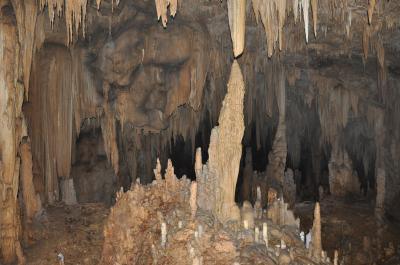The Mayan Collapse
New evidence into the mysterious cause of the extinction of an ancient empire.

Description of photo: The interior of Yok Balum cave in Belize, where scientists harvested a telltale stalagmite
The agriculture-based Mayan Civilization occupied the Central America region, what is now know as Guatemala, and the surrounding area, beginning in 1,800 B.C. They were known for their magnificent stone monuments; the last one erected before their collapse was the Kukulkan pyramid in Chichen Itza, Mexico.
The Mayan culture experienced a remarkable expansion, which has been studied and evidenced in architectural, political and textual artifacts from what is known as the Classic Period, until its decline beginning around 800 AD. Just 300 years later the culture suffered its eventual fate of devastating and absolute demise.
As reported in the recent issue of Science, anthropologist Douglas Kennett lead an international team of researchers, in an investigation of a cave located within 1.5 km (.9 mi.) of one significant Mayan site and 19 mi. (30 km) of three others.
The scientists harvested a stalagmite from this cave in the jungles of Belize, for the purpose of determining how long ago it started growing. Since they know that the rate of growth for stalagmites to be about four one-thousandths of an inch to about 0.5 years, they were able to calculate the birth of the one they confiscated to be 40 B.C.
Why is this information important? Why bother to go to such effort and expense to measure the life of a hard to reach stalagmite?
Because it is believed that the up and down cycles of the Mayans and their ultimate decline, may have been climate related and specifically drought related. Rainfall absorbed by the ground seeped into the cave and was incorporated into the composition of the caves stalagmites.
This process of nature allowed the scientists to determine which time point, what century, during the stalagmite’s development, had wet or dry climate cycles. They reported their findings of droughts lasting at least a few decades each and that they occurred from 200 to 1100 AD.
The droughts coincided repeatedly with times of upheaval in the Mayan culture, which point to climate as one possible culprit of the downfall of the great Mayan civilization.
Sources: